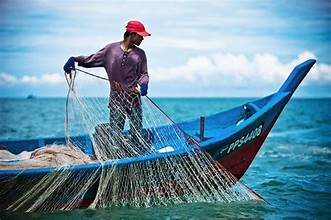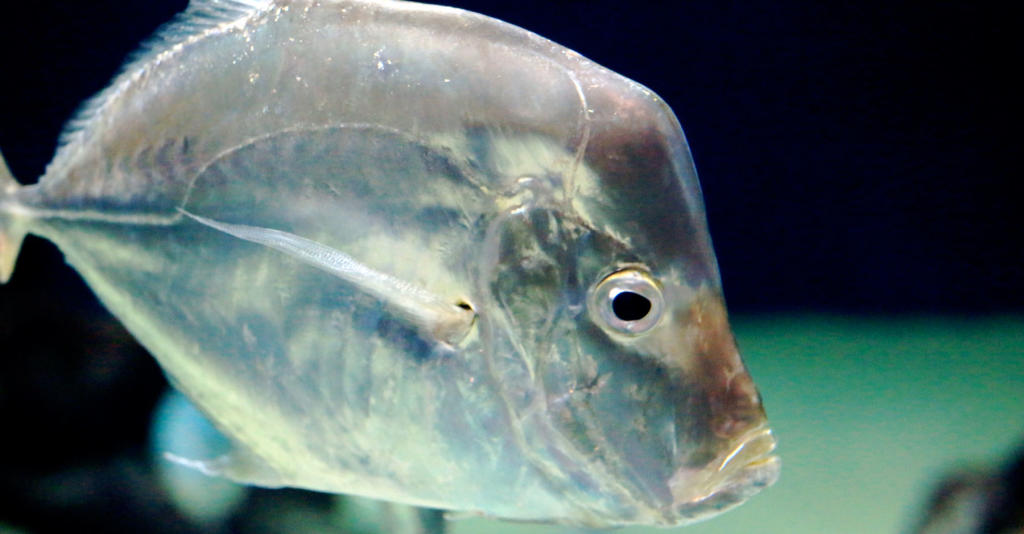The ocean is full of life, but not without its mysteries. One of them—among the best-kept secrets—is an “invisible” fish parasite that has been hiding in fish populations worldwide. Everything we thought we knew about marine biology and the delicate systems that exist within our waters changes right here.
The Discovery
Equipped with advanced technology, a group of scientists from around the world initiated a pioneering study to investigate the health status of various fish species so that unknown fish pathogens could be discovered. What they found out was quite surprising and interestingly shocking: a microscopic parasite almost invisible through the naked eye and other older methods was shown to have infected a large number of fish species worldwide.
The “Invisible” Parasite
This parasite is known as Piscinomyxa obscura, and it’s incredibly good at going unnoticed. In fact, it escaped detection by conventional microscopy and routine health monitoring programs in fisheries and farmed aquaculture stocks. It wasn’t until the application of high-end sequencing technologies for genes that researchers were able to identify its existence. Piscinomyxa obscura burrows into the tissues of its host but does not actually cause any immediate harm; instead, it poses a long-term threat to the fish’s health.
Global Impact
The finding of this parasite has implications of great magnitude. It first opens up a huge gap that had previously not been understood about marine parasitology and fish health. Fisheries and aquaculture, which are vital sources of food and economic activity for many communities, could be at risk in case this parasite affects fish stocks significantly.
Impact on Fisheries and Aquaculture
Such detection of the parasitic outbreak will require fishery managers and aquaculture operators to reconsider their monitoring and disease management policies. In the event that this invasion by Piscinomyxa obscura is uncontrolled, decline of fish populations could occur. It is always a parasite that has been shown to hide from detection, which implies incompleteness of health assessments being taken at the moment. It can always undermine the strategic fish stocks that are critical to both economic and ecological value.
Economic Implications

The economic impact of this discovery could be great. Fisheries pump billions of dollars into the world economy, and if their fish populations were to fall because no one detected a parasite, this could influence the people working in fisheries and the industries dependent upon fish products. In fact, from the restaurant down to food-processing plants, anything up the supply chain can throw a wrench into operations and make economic uncertainty in regions dependent upon those industries.
The Way Forward
Scientists are seeking more funds for research following the finding to better understand the life cycle and role of Piscinomyxa obscura. Insight into how this parasite spreads, its life stages, and how it ultimately impacts fish physiology will be the key to devising strategies to mitigate its effects.
Better Detection Methods
In this respect, researchers are eager to find advanced diagnostic tools integrated into routine fish health monitoring, so there is a fight against such stealthy nature of Piscinomyxa obscura. Genomic sequencing and sophisticated imaging techniques will make a difference in the future for the early detection and probably preventing the widespread occurrence of these infestations.
Public Awareness and Consumer Safety
This finding points out to the general public itself the importance of food safety and stringent health protocoling in seafood production. While there is no known dire threat to human health by Piscinomyxa obscura, at present, the diversification of health situations concerning fish populations is important to maintain stable food supplies.
The Role of Conservation
This, in a way, should create a sense of urgency among environmentalists and marine conservationists. The preservation of marine biodiversity and healthy ecosystems is one of the key factors that can guarantee fish species survival—but generally, the health of our seas. Global cooperation and collective responsibility in marine conversation and management of fisheries are satellite factors if we are to survive the threat posed by Piscinomyxa obscura.
How Scientists Reacted
The scientific fraternity responded very fast to combat the threats of Piscinomyxa obscura. Research institutes across the globe are now coordinating with each other in terms of exchange of databases and resources to expedite the study of the ciliate. Conferences and symposia are being arranged to present updated findings and work out comprehensive strategies to avert the attacks.
Scientific and Technological Inventions
Technology innovation is also playing a vital role in fighting Piscinomyxa obscura. Drones fitted with the latest imaging sensors are being launched to track fish populations in their natural habitats. This kind of drones can capture high-resolution images and videos, thus providing scientists with real-time data about fish health and behavior, very essential in early detection and intervention.
Importance of Ecosystem Health
In terms of fish populations’ health, it is directly connected to that of marine ecosystems in general. Piscinomyxa obscura can have an effect not only on the fish population but can also impair the entire feed chain. The predatory species which prejudiced a great deal upon infected fish majorly as their food will diminish, hence giving way to ecosystem imbalance. This calls for a protective holistic approach that considers monitoring and prevention, intervention strategies.
Conclusion:
The case of Piscinomyxa obscura itself stands as a humbling reminder that so much remains unknown about the natural world. As scientists continue to crack the code of this frustrating parasite, they will undeniably be led by challenging findings on the road to much better ways of managing fish health and preserving marine ecosystems. Raising awareness and building global collaboration will then become important steps toward safeguarding the future of our ocean.
What You Can Do
Stay abreast of advances in marine science and support enhancements in fish health monitoring and marine conservation efforts. Be one of the change-makers working collaboratively to protect our oceans and secure the long-term sustainability of key fish populations around the world.
Piscinomyxa obscura weaves its story into the great tapestry of life below the waves, coaching humans in adaptation and innovation toward their nobility in understanding and conservation of the fragile web of marine life. We cannot see the road ahead, but through dedication and scientific ingenuity, much can be done to ensure that our oceans remain vibrant and healthy for generations to come.

